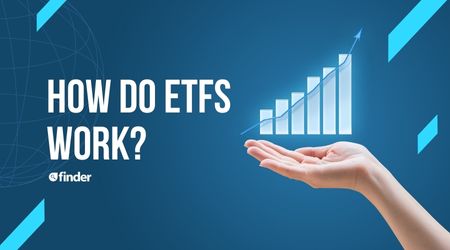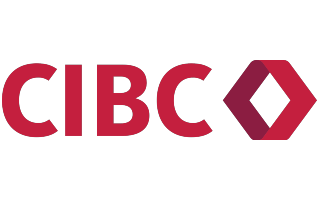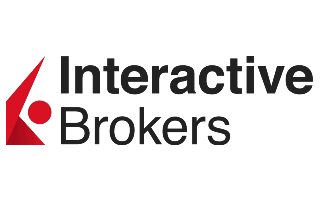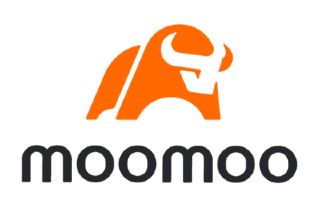Key takeaways
- You need to open a stock trading account to buy stocks in Canada. This can be done online and you may not need a minimum deposit.
- Market orders let you buy stocks now at the current price. Conditional orders let you place trades only when stocks reach a price you decide beforehand.
- Each stock trade will cost you $0 to $9.99, depending on the brokerage you choose.
How to buy stocks in Canada: 5 easy steps
- Choose an online stock trading platform
- Sign up for an account
- Set up a funding method to pay for the transaction
- Choose the stocks you want to buy
- Place your order
Step 1: Choose an online stock trading platform
While big brokers TD Direct Investing, CIBC Investor's Edge, BMO InvestorLine, RBC Direct Investing and Scotia iTRADE are still going strong, they’re not the only brokers in town anymore. The increasing competition over the past few decades has transformed the way everyday investors access the stock market. There are now a number of online brokerages in Canada that offer user-friendly platforms, convenient features, faster trading and lower fees.
Our top picks for where to invest in stocks in Canada
How do I choose the right stock trading app for me?
- Compare features. When looking for an online brokerage in Canada, think about your level of trading experience and what kind of features are important to you as well as with the platform’s ease-of-use.
- Compare fees. While most brokers don’t charge a stock trading fee, some charge extra for specialized investment products. High-value trades are often charged as a percentage of the total trade value, rather than a fixed fee.
- Tradable securities. Most brokers offer at least stocks and exchange-traded funds (ETFs). Big brokers like Interactive Brokers have the largest lineup of investment options, while more beginner-focused brokers like Wealthsimple offer a more simple lineup of stocks, ETFs and cryptocurrency.
- Research tools. Online brokers usually offer market news, updates and other research tools that will let you investigate the trading history of individual stocks.
- Customer support. How fast can you get a hold of customer support if you’re having an issue with your investment? The quality of customer support and the ease at which you can contact them is no less important than fees or research tools.
Using a robo-advisor
If buying and selling stocks still seems intimidating, you could consider using a robo-advisor. Robo-advisors are algorithms that invest in a mix of stocks (and bonds) according to your risk tolerance, financial situation and investing timeline. This passive investing approach saves time too, as you don’t need to research what shares to buy and sell and when to do so.
Step 2: Sign up for an account
Brokers, banks and other financial services companies follow a regulatory process known as Know Your Client (KYC), which is a process to verify the identity and other credentials of customers. When you’re applying for a brokerage account, you’re taking part in the KYC process.
The exact steps for opening a stock trading account vary between platforms, but here’s how it generally works:
- Start an online application. Most platforms let you complete the entire application process online, although some may require extra steps like visiting a brokerage branch in person to verify your identity and complete the process.
- Create your profile. Create the username and password with which you’ll access your account. You may have to confirm any devices linked to your trading account before your application can proceed.
- Select an account type. TFSAs and RRSPs are popular types of accounts, although you may also be able to open other accounts like trusts and business accounts.
- Enter your personal information. You’ll typically need to provide your full name, email address, residential address, phone number and Social Insurance Number (SIN).
- Enter basic employment and financial information. You may be asked to provide the name of your employer, basic financial information and bank account details to transfer funds to your investment account.
- Verify your ID and residency. Usually, you need to email or upload a copy of valid, government-issued photo ID (such as a driver’s license or passport) to your brokerage website.
- Submit your application and wait for approval. Once you’ve provided all required information and documents, submit your application. Approval often takes anywhere from 1-2 business days.
Step 3: Set up a funding method to pay for the transaction
While you can open an account with most brokers without a minimum deposit, you can’t trade until you have sufficient funds in your account to cover the cost of the transaction.
One of the easiest ways to do this is to link your bank account and transfer funds via Electronic Funds Transfer (EFT). EFT transfers take between 1 and 3 business days to complete, but some brokers offer a feature called instant deposits, which allow you to trade before the funds have settled.
Other funding methods include wire transfer, cheque deposit and account transfers from other brokerage accounts. Credit cards are typically not permitted as a brokerage account funding method.
Step 4: Choose the stocks you want to buy
Where do you get investment ideas? In other words, how do you choose the best stocks to buy?
A good place to start is with an industry that interests you and then explore the different companies in that space. Identify key players and young companies with potential for growth but also figure out which companies are falling, or have fallen, out of favor. If you want to follow a Warren Buffett saying, “never invest in a business you cannot understand.”
Tools like stock screeners can help you narrow down stocks by sector, industry, price range and more. Search for companies by name or ticker symbol. If you’re on the fence about a purchase, add the stock to your watchlist to keep an eye on its performance. Analyst research reports can give you valuable insight into companies and guidance as to whether a particular company is a good investment.
At the end of the day, you should perform as much in-depth research as possible until you’re comfortable investing.
Step 5: Place your order
With a stock in mind and funding in place, it’s almost time to invest. But before you buy any shares, you should know how much money you want to invest in any particular stock.
Consider your budget, investment goals and your overall portfolio allocation. With the advent of fractional shares, you no longer need the entire share price to invest. Fractional share trading lets you invest specific dollar amounts in a stock instead of having to buy whole shares. Though not every broker offers this feature.
How many stocks should I purchase?
The ideal number of stocks for your portfolio depends on your investment goals and level of desired diversification. Renowned value investor Benjamin Graham put this number between 10 and 30 stocks. New investors may hold fewer stocks, while experienced traders may feel comfortable monitoring a wider range of securities.
5 ways to invest in stocks
Almost anyone can invest in the stock market, and it’s possible to invest with as little as a few dollars. Here are some of the most popular methods for investing in stocks in Canada:
- Buy stocks through a trading platform: As outlined above, you can open a stock trading account with an investment platform and buy stocks online. Compare platforms here.
- Invest in ETFs or mutual funds: Purchasing shares of an exchange-traded fund or mutual fund lets you own part of a pool of stocks in different companies. This can be a great way to diversify your investments and reduce your risk.
- Use a micro-investing app: Round up everyday purchases to the nearest dollar and transfer the difference into an investment account. You’d be surprised how quickly small transfers can add up.
- Use a robo-advisor: Avoid the hassle of managing your own investments and the hardship of high professional management fees by letting a computer algorithmically invest for you based on your individual goals and risk tolerance.
- Use a wealth manager or financial advisor: Employ an advisor to buy stocks and manage your investments on your behalf. This can be costly, but you’ll benefit from trained professionals with years of experience and industry-leading tools at their fingertips.
Types of stock orders
There are two ways to purchase stock: placing a market order or a conditional order.
- Market orders. Place a market order when you want to buy a stock immediately at the current market price. If you’re buying shares of a volatile stock, the price at which your order is executed could be higher or lower than the last traded price.
- Conditional orders. Place a conditional order, such as a limit order or stop order, when you want a stock to meet specific conditions before you invest. A limit buy lets you set a maximum purchase price for your order. If that price becomes available within your specified time, the trade is executed. If the stock never hits the specified price, your trade won’t be executed.
Once you’ve entered details like the type of order you want to execute and the number of stocks you’d like to purchase, submit the order.
Compare more online brokerages in Canada
Finder Score for stock trading platforms
To make comparing even easier we came up with the Finder Score. Trading costs, account fees and features across 10+ stock trading platforms and apps are all weighted and scaled to produce a score out of 10. The higher the score the better the platform - simple.
How dollar-cost averaging can lower your risk
Dollar-cost averaging is a strategy investors use to minimize losses from market volatility and maximize their long-term returns. Instead of investing a large sum of money all at once, investors gradually purchase stocks over time, often at regular intervals.
Say you have $1,000 to buy stocks online. Instead of investing the entire $1,000 at once, you dollar-cost average by investing $100 every month for 10 months. This means you purchase shares at various prices—some low, some high—which is better than buying at one time when the shares might be overpriced.
How much does it cost to buy stocks in Canada?
The cost to buy stocks depends on which trading platform you’re using, with trading commissions often ranging from $0 to $9.99.
Some online brokerages like Wealthsimple charge no fees or commissions to trade stocks, and some require a minimum deposit to open a trading account. Other brokers charge extra for specialized investment products. High-value trades are often charged as a percentage of the total trade value, rather than a fixed fee.
If you’re an active trader, you could qualify for discounted trading fees. Requirements vary between brokerages, but usually this involves placing around 150+ trades per quarter.
You can compare the fees and features of the best stock trading apps here.
What happens after I buy a stock?
Once the broker executes your order, you’re considered a shareholder. Congratulations! And now you can either hold the stock or sell it. Buy-and-hold investors hold on to stocks in the hopes that they will eventually increase in value. They may hold a stock for months or years before they decide to sell it — hopefully at a profit.
Active traders, on the other hand, may offload a stock quickly. Specifically, day traders engage in intraday trading, which involves buying and selling a stock over a single trading day. The aim here is to take advantage of sudden changes in a stock’s price. This type of trading is complex, fast-paced and requires a comprehensive understanding of the market. It’s not a suitable trading strategy for beginners.
Ultimately, what you do with the assets in your portfolio depends on your investment goals, strategy and risk tolerance. Make sure to check in occasionally on your investments to track their performance and ensure your portfolio still aligns with your investment goals.
When should I sell my stocks?
The process of selling your shares is equally as important as buying them. But not every investor follows the same playbook.
Some experts say you should consider selling your stocks if the company’s fundamentals change for the worse or if the competitive landscape changes. For instance, you may decide to sell your stock in a company whose earnings continue to steadily decrease or whose performance has dramatically weakened compared to industry peers.
Another reason to sell might be that you need the money for a more attractive investment.
Ideally, investors want to sell when it will be the most profitable. But timing the market is incredibly difficult, if not impossible, and can be costly. This is why it’s important to develop a strategy and stick to it.
What are the benefits of buying stocks online?
- Lower fees and faster trades. Online trading is cheaper and faster than broker-assisted trades, which can cost upwards of $25 or more per trade.
- Convenience. Sign up for an account in minutes, and trade from anywhere with an internet connection.
- More control. Online trading gives you complete control over your portfolio and investments. Do your own research, and place your own trades without influence from brokers or financial advisors seeking a commission.
- Complimentary research and trading tools. Many online brokers provide free educational resources and research tools that can help you better understand the markets and investing.
- Real-time updates. Monitor asset prices, stock market news and your portfolio from your phone, tablet or laptop.
Is it safe to buy stocks online in Canada?
Generally speaking, yes, it’s safe to buy stocks from an online brokerage in Canada. Most trading platforms employ safety measures like 24/7 infrastructure monitoring and two-factor authentication as standard protocols along with maintaining a membership or good standing with the IIROC. But, like with anything on the internet, there are still some things to watch out for:
- Technical problems. Your ability to trade and invest depends on the underlying platform, its software and its servers. If you can’t access your account because of a server outage, you could miss an opportunity to buy or incur losses if you can’t sell.
- Security concerns. Hackers constantly target online brokers, and a breach could result in the theft of personal and financial information.
- Making rash investment decisions. Emotional investing and unfettered access to the market can lead to impulse trading, which can be costly. Traders can also get caught up in the excitement of fast-moving markets, investing too much too quickly and without first taking the proper time to understand the stock.
Do all of Canada’s Big Five Banks have stock trading platforms?
Yes, all of Canada’s Big Five Banks offer stock trading platforms and apps. Here’s a quick breakdown of the platforms each bank offers to help you narrow down your options for how buy stocks in Canada.
TD Direct Investing
TD offers Canadians a stock trading platform and app where you can put your investments into a variety of registered or non-registered accounts. TD Direct Investing also provides users a host of learning resources and research tools to help you make smart investments. Trading comes with reasonable commission rates, but you may find cheaper options depending on the type of investments you plan to make.
- Stock trading fee: $7.00 - $9.99
- Account fee: $0 if conditions met, otherwise $100/year
- Minimum balance: $0 (but a $25 quarterly account fee applies if your total balance is less than $15,000)
RBC Direct Investing
RBC Direct Investing offers a robust investing platform and trading dashboard either online or through the RBC Mobile app. Active traders will save on commissions. RBC Direct Investing also offers margin trading and the ability to get real-time quotes for stocks and ETFs. One unique selling point for this platform is the option to use a demo account where you can practice stock trading in Canada without using real money.
- Stock trading fee: $9.95 ($6.95 if you place 150+ trades per quarter)
- Account fee: $0 if conditions met, otherwise $25/quarter
- Minimum balance: $0 (but a $25 quarterly account fee applies if your total balance is less than $15,000)
CIBC Investor’s Edge
CIBC Investor's Edge is an online brokerage where you can choose to put your money in both registered and non-registered accounts depending on your investing goals. If you’re already a CIBC customer, the CIBC Investor’s Edge can be a great way to keep all of your finances under one roof while getting access to a user-friendly platform with a wide variety of securities.- Stock trading fee: $6.95
- Account fee: $0 if conditions met, or $100
- Minimum balance: $0
Scotia iTRADE
Scotia iTRADE offers a highly rated stock trading platform and app for Canadians. Its commission rates decrease when you trade more. Scotia iTRADE also offers a practice account with a fictional portfolio of $100,00 so you can learn how to buy stocks in Canada with what is essentially play money.
- Stock trading fee: $4.99–$9.99
- Account fee: $0 if conditions met, otherwise $100/yr
- Minimum balance: $0 (but a $100 annual account fee applies if your total balance is less than $25,000 and you don’t place at least 12 commissionable trades per year)
BMO InvestorLine
BMO InvestorLine also provides users with both a web-based trading platform and app. You’ll only pay a fee per trade if you have less than a specified minimum in your account. A nice perk of using BMO InvestorLine is that it makes its investment research available to its users.
- Stock trading fee: $9.95
- Account fee: $0 if conditions met, otherwise $50 - $100 per year
- Minimum balance: $0 (but a $100 annual account fee applies if your total balance is less than $15,000 for non-registered accounts or $25,000 for registered accounts)
National Bank Direct Brokerage
Unlike many other brokerages run by major Canadian banks, NBDB offers fee-free stock and ETF trades. But you’ll pay an exchange rate mark up when converting currencies to trade non-Canadian securities.
- Stock trading fee: $0
- Account fee: $0 if conditions met, otherwise $100/yr
- Minimum balance: $0 (but a $100 annual account fee applies if your total balance is less than $20,000)
Finder survey: When choosing a stock trading platform, which factors matter most to Canadians from different provinces?
Response | Saskatchewan | Prince Edward Island | Ontario | Nova Scotia | Newfoundland and Labrador | New Brunswick | Manitoba | British Columbia | Alberta |
|---|---|---|---|---|---|---|---|---|---|
| Fees | 68.29% | 66.67% | 72.78% | 68.29% | 65% | 60% | 87.8% | 69.95% | 69.01% |
| Provider reputation | 51.22% | 50% | 41.62% | 39.02% | 30% | 40% | 48.78% | 44.81% | 41.55% |
| Minimum account balance | 39.02% | 33.33% | 34.91% | 34.15% | 55% | 55% | 43.9% | 37.7% | 37.32% |
| Investment types covered | 36.59% | 33.33% | 32.15% | 21.95% | 35% | 50% | 31.71% | 33.33% | 44.37% |
| Customer service | 29.27% | 50% | 36.88% | 34.15% | 35% | 35% | 31.71% | 34.43% | 30.99% |
| Trading tools and platforms | 29.27% | 16.67% | 32.54% | 48.78% | 20% | 5% | 26.83% | 30.05% | 28.17% |
| Number of investments | 24.39% | 50% | 25.84% | 19.51% | 35% | 25% | 9.76% | 25.14% | 26.06% |
| Whether commission free ETFs are covered | 21.95% | 23.27% | 34.15% | 25% | 30% | 19.51% | 24.59% | 22.54% |
Bottom line
- Buying stocks online begins with comparing and choosing a quality trading platform.
- Before committing money, learn about your investing options and research potential companies to invest in.
- Try to remove emotions from investing and be prepared to follow your plan.
Not ready to open an account with an online brokerage in Canada? Practice your trades risk-free with a stock-trading game.
FAQs on how to invest in stocks in Canada
More on investing

What are the best stocks for beginners with little money to invest?
Want to dive into investing but don’t have much to spend? Take a look at these types of stocks.
Read more…
Meme stocks: What they are and examples of popular stocks
Meme stocks can produce large gains in short periods, but the stocks are volatile.
Read more…
How do ETFs work?
Your guide to how ETFs work and whether this type of investment is right for you.
Read more…More guides on Finder
-
Full guide to paper trading accounts for 2025
How to choose the best paper trading platform to help you learn the ins and outs of investing.
-
How will tariffs affect the stock market?
Find out how the Trump tariffs will impact the stock market and explore Canadian stocks that may be resilient amidst tariffs.
-
What are the best stocks for beginners with little money to invest?
Want to dive into investing but don’t have much to spend? Take a look at these types of stocks.
-
Trading promos & investment account bonuses for 2025
Enjoy perks like free trades and cash back when you open a stock trading account with these online broker promotions.
-
TD Easy Trade review
Use this self-directed trading app to learn the basics of investing with a streamlined app and a number of free trades annually.
-
Best renewable energy stocks
These are the best renewable energy stocks to buy now in Canada.
-
10 best trading platforms and apps in Canada for 2025
Whether you’re a new or experienced investor, these are the best stock trading platforms and apps in Canada.
-
TD Direct Investing Review
Make quick and easy trades using this reputable online trading platform from TD.
-
RBC Direct Investing review
Here’s what you need to know about the benefits and shortcomings of this Big Bank investment platform.
-
Questrade review
Questrade is a leader among Canadian discount brokerages, but is it right for you? Compare fees, features and alternatives here.




